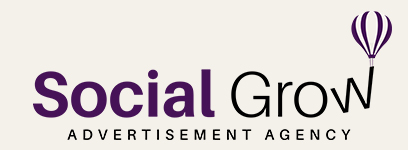Logo Design
Home – Logo Design
Account Handling
In the digital age, where attention spans are fleeting and first impressions are often formed in a matter of seconds, a well-designed logo holds immeasurable importance. It is the visual cornerstone of a brand’s identity, the face of a company or organization, and a symbol that can communicate a myriad of ideas and emotions. In this article, we will delve into the art and science of logo designing, exploring the intricacies of this visual craft and its profound significance in the context of web design and brand representation.
The Power of a First Impression
In the vast and often overwhelming sea of online content, a logo is a lifebuoy. It is the first point of contact for a potential customer, and it must make an immediate impact. In the digital world, where users are bombarded with information and choices, a well-crafted logo can be the difference between capturing someone’s attention and being passed over.


A logo’s design, colors, and typography work together to create a visual identity that conveys the essence of the brand. It’s not just about aesthetics; it’s about communicating a message. A logo should tell the story of a company, evoke emotions, and establish a sense of trust and recognition.
The Elements of Logo Design
Logo design is both an art and a science. It requires a keen understanding of design principles and a creative mind to ensure the logo not only looks good but also functions effectively. Let’s break down some of the fundamental elements of logo design:
1. Simplicity: One of the golden rules of logo design is simplicity. A simple logo is easy to recognize and remember. Think of some of the most iconic logos – Apple, Nike, or McDonald’s. They are all simple, memorable, and instantly recognizable.
2. Versatility: A logo should be versatile, meaning it should look equally good on a website, a business card, a billboard, or a mobile app. Logos that are too complex may lose their impact when scaled down or reproduced in various media.
3. Relevance: The design of a logo should align with the brand’s identity and values. A law firm’s logo will look quite different from that of a children’s toy store. The design must resonate with the target audience and industry.
4. Timelessness: While trends come and go, a great logo stands the test of time. It should be designed to remain relevant for many years. A logo that constantly changes can confuse customers and weaken brand recognition.
5. Uniqueness: Your logo should set you apart from the competition. It should be distinctive and not easily confused with other brands. A unique logo ensures that your brand stands out in the crowd.
The Psychology of Color and Typography
The choice of color and typography in a logo isn’t arbitrary; it’s a deliberate decision that can profoundly impact how the logo is perceived. Color and typography evoke emotions and convey meaning.
For example, blue is often associated with trust and reliability, which is why many financial institutions use it in their logos. Red can evoke a sense of urgency or excitement, making it suitable for brands in the food and beverage industry. Serif fonts convey tradition and professionalism, while sans-serif fonts are seen as modern and approachable.
The combination of color and typography in a logo can tell a story about a brand. It can make a brand feel fun, serious, sophisticated, or approachable. Understanding the psychology of these design elements is crucial in logo design.
The Process of Logo Design
Creating a logo is not a haphazard endeavor. It involves a systematic and iterative process. Here’s a simplified breakdown of the typical logo design process:
Client Brief: The designer starts by understanding the client’s needs and objectives. What is the brand’s mission, values, and target audience? What is the message they want the logo to convey?
Research: The designer then conducts research into the industry, competition, and current design trends. This helps in identifying gaps and opportunities for a unique design.
Concept Development: Ideas and concepts are sketched out, exploring various possibilities. These are refined and evaluated for their potential to convey the brand’s message effectively.
Digital Design: The chosen concepts are translated into digital format, often using vector graphics software. This allows for scalability without loss of quality.
Feedback and Iteration: The client is presented with the initial design concepts, and feedback is gathered. This phase may involve multiple iterations until the client is satisfied with the final design.
Finalization: Once the design is approved, the final logo is produced in various formats suitable for different applications – web, print, merchandise, etc.
Guidelines: The designer may also create a brand style guide that outlines the logo’s usage rules, including color codes, typography choices, and clear space requirements.
